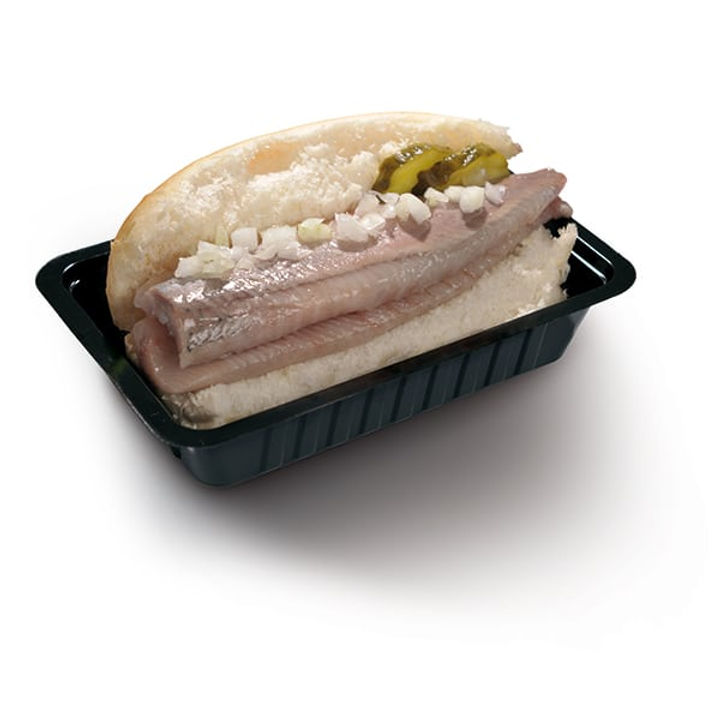
The holiday season has this incredible magic – it’s all about warmth, joy, and being with loved ones. And what better way to celebrate this festive season than by indulging in delicious treats passed down from generation to generation? One such delicious traditional Dutch delicacy is called “Oliebollen.” In this blog post, we’ll explore what Oliebollen are?, their fascinating history, discuss why they’re eaten during the holidays, and provide tips on where to find the best Oliebollen. So get ready to dive into the world of Oliebollen!
What Are Oliebollen?
Oliebollen, which means “oil balls” in Dutch, are deep-fried doughnuts that generations of Dutch people have enjoyed. These delightful treats are made with a sweet yeast dough with raisins or currants. The dough is then shaped into small round balls and fried until golden brown. The outcome? A crispy exterior with a soft and fluffy interior that melts in your mouth.
During the winter, especially around New Year’s Eve, it’s a tradition to enjoy oliebollen. They represent saying goodbye to the old year and welcoming the new one. People often sprinkle powdered sugar on them to add a bit of sweetness. Now, let’s explore the exciting history of oliebollen.
A Brief History Of Oliebollen
Oliebollen has a history that goes back many years. It began when Germanic tribes used to fry dough in oil as an offering to their gods during winter celebrations. As Christianity spread, these fried treats became associated with important religious festivals such as Christmas and New Year’s Eve.
During medieval times, friars started making similar dough-based snacks called “oliekoeken” (oil cakes) using ingredients such as flour, eggs, milk, and yeast. These early versions of oliebollen were often prepared in monasteries and distributed to people experiencing poverty as a charitable act.
Over time, the recipe evolved, with the addition of dried fruits like raisins or currants becoming a popular variation. Oliebollen gained widespread popularity in the Netherlands during the 19th century and has become an iconic culinary delight associated with Dutch culture.

Why Are Oliebollen Eaten During Holidays?
Oliebollen has become deeply ingrained in Dutch holiday traditions, especially during New Year’s Eve celebrations. But why are they so closely associated with this festive time of year? There are a few reasons behind this tasty tradition:
- Symbolism: The round shape of the oliebollen represents continuity and coming full circle, symbolizing the completion of one year and the beginning of another.
- Farewell to the Old: As we bid farewell to the past year, enjoying oliebollen is a way to celebrate its memories and lessons while eagerly embracing new opportunities.
- Shared Experience: Oliebollen are often made and enjoyed together as a family or community activity, fostering a sense of togetherness and unity during holiday gatherings.
Black Friday Sale on Oliebollen product (BUY NOW)
Where to Find the Best Oliebollen
If you find yourself in the Netherlands craving some authentic Olliebolen, there are plenty of places to get them. Check out these top recommendations:

Amsterdam: Albert Cuyp Market
Visit Amsterdam’s famous Albert Cup Market to enjoy delicious Oliboulen from various stalls while exploring this vibrant market.
Rotterdam: Markthal
In Rotterdam, visit Markthal—a food lover’s paradise—to find an array of culinary delights, including mouthwatering oliebollen. Explore the diverse food stalls and embrace the festive atmosphere during the holiday season.
The Hague: Haagse Markt
If you’re in The Hague, make sure to visit Haagse Markt. This bustling market is known for its wide assortment of international foods, and it’s also a great spot to savor oliebollen from local vendors.
Local (street) Bakeries
Remember to check out local bakeries in smaller towns and cities across the Netherlands. These hidden gems often have their unique twist on oliebollen recipes, offering an authentic and unforgettable experience.
Conclusions
Oliebollen are more than just delicious deep-fried doughnuts; they are an integral part of Dutch culture and holiday traditions. From humble beginnings to widespread popularity today, these delicious treats have been around for a long time. Whether exploring the streets of Amsterdam or visiting a small village, make sure to try this traditional Dutch treat during your trip.
So whenever you plan to visit the Netherlands during New Year’s Eve, try the delicious oliebollen. Enjoy the warmth, savor the sweetness, and be a part of a tradition that has brought joy to many people throughout history.
















Leave a Reply